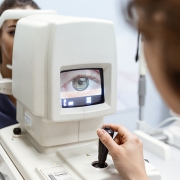What are the LASIK Risks and Complications
LASIK eye surgery is a popular surgical procedure that helps correct vision problems such as nearsightedness, farsightedness, and astigmatism. It involves reshaping the cornea, which is the clear front part of the eye, using a laser. While LASIK can be quite effective in improving vision, it is not without risks and complications. In this blog post, we will explore some of the potential risks and complications associated with LASIK eye surgery.
1. Dry Eyes
Dry eyes are a common side effect of LASIK surgery. This occurs because the surgery can disrupt the normal tear production process, leading to a decrease in the production of tears. This can result in the eyes feeling dry, gritty, and uncomfortable. In some cases, dry eyes can become severe and require treatment with eye drops or other medications.
2. Visual Disturbances
LASIK surgery can cause visual disturbances such as glare, halos, and double vision. These side effects are usually temporary and improve over time, but in some cases, they can be permanent. Visual disturbances are more common in patients with larger pupils or higher degrees of nearsightedness or farsightedness.
3. Corneal Flap Complications
During LASIK surgery, a thin flap is created in the cornea to allow the laser to reshape the underlying tissue. In rare cases, complications can occur with the corneal flap, such as incomplete or irregular flaps, or flaps that become detached. These complications can result in vision loss and may require additional surgery to correct.
4. Undercorrection or Overcorrection
LASIK surgery aims to correct a patient’s vision to a specific degree of accuracy. However, in some cases, the surgery may result in undercorrection or overcorrection of the vision. Undercorrection means that the patient’s vision is not improved as much as expected after surgery, while overcorrection means that the patient’s vision is corrected too much. Both of these complications can require additional surgery to correct.
5. Infection
As with any surgical procedure, there is a risk of infection with LASIK surgery. This risk is relatively low, but it is important for patients to follow all post-operative care instructions to minimize the risk of infection.
While LASIK eye surgery can be an effective way to correct vision problems, it is important for patients to be aware of the potential risks and complications associated with the procedure. Patients should discuss these risks with their eye doctor and make an informed decision about whether LASIK surgery is the right choice for them.









